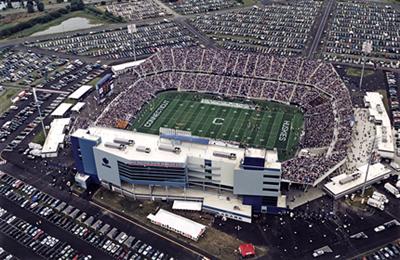 Much has been written about UConn football recently, including the narrative that the sport is the reason the Huskies are not currently in the Power 5, or so says Joe Nocera of the New York Times. However, if one looks objectively at the Huskies history, the programs’ performance indicates quite a different story; one that includes a quick rise to prominence, a story of perseverance in the face of tragedy and yet another that proves UConn football is a much more respectable brand in the sport, than many give them credit for.
Much has been written about UConn football recently, including the narrative that the sport is the reason the Huskies are not currently in the Power 5, or so says Joe Nocera of the New York Times. However, if one looks objectively at the Huskies history, the programs’ performance indicates quite a different story; one that includes a quick rise to prominence, a story of perseverance in the face of tragedy and yet another that proves UConn football is a much more respectable brand in the sport, than many give them credit for.
The Transition to 1-A
The University of Connecticut has been playing competitive collegiate football since 1896. One-hundred and three years after they first took the field, the university began the process to take football to the highest competitive level, today’s Football Bowl Subdivision (FBS). The leadership at UConn were ahead of the curve in looking at the future landscape of college athletics in the mid-1990’s, realizing that if the athletic department was going to compete with like minded universities, they needed to upgrade football to Division 1-A.
In 1999, the Huskies accepted an offer from the Big East and an agreement was in place to see UConn join the league by the 2005 season. Under new head coach Randy Edsall, the Huskies became a partial member of 1-A in 2000, while playing in an on-campus 16,200 seat, Memorial Stadium. The Huskies facilities at the time consisted of double wide trailers parked behind Gampel Pavilion. It was clear, upgrades and investments needed to be made.
A stadium was formerly approved by the state legislature on land donated by Pratt & Whitney in East Hartford, a former airstrip for the testing of military and commercial jet engines, about 25 miles from the Storrs campus. Under Edsall, the program quickly saw an up-tick both in on-field performance and in recruiting, as the number of allotted scholarships increased.
While construction was finalized for the opening of Rentschler Field for the 2003 season, the Huskies made some noise in their first, full schedule of 1-A football in 2002. That season included their first ever win over BCS competition in Rutgers (Big East) and their first win over a bowl-bound program, in Iowa State (Big 12), 37-20, to close the season.
That victory set the stage for ’03, when UConn opened up their new, state-of-the-art, 40,000-seat, $91M stadium. The Huskies hosted the Big Ten’s Indiana Hoosiers, dominating in every facet of the game, en route to a 34-10 win.
That day confirmed what many believed after the win over the Cyclones to close ’02, UConn had arrived and they were ready to take on the new challenges of big time football. The Huskies went on to a 9-3 record that season, including another win over Rutgers, as well as the second consecutive dominant road victory to close the year, this time against the ACC and Wake Forest, a 51-17 win. UConn was bowl eligible for the first time in their short history at the 1-A level, but due to their independent status and lack of affiliation with a bowl, the Huskies stayed home.
Big East & Bowl Games (2004-11)
The next season was supposed to be another year of preparation for the Huskies, who were slated to join the Big East as a full member in 2005. However, the defections of both Miami (FL) and Virginia Tech to the Atlantic Coast Conference for the ’04 season, prompted the Big East to give UConn early entry into the league. The season included a night to remember in their home conference opener against Pitt, televised nationally on a Thursday night on ESPN. Former players still speak to the electricity running through ‘The Rent’ that night, as UConn was victorious, 29-17.
“When I took this job, I never could have envisioned going into the sixth year that we would be a member of the Big East Conference, that we would be playing in front of a sold-out crowd, that we would be playing on Thursday night on ESPN,” Edsall said after the win. “And there’s nobody in this world that could have dreamt that or believed it other than a bunch of kids and a few coaches.”
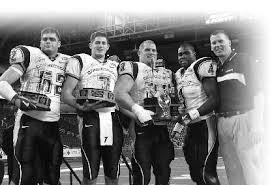 UConn finished their first season in a BCS conference at 8-4, 3-3 (Big East), earning their first ever trip to a bowl game, the Motor City Bowl in Detroit, MI against Toledo. Getting there was an accomplishment, but for the school, ticket sales would be the next test. The year prior for comparison, Boston College sold just 1,500 tickets to the same bowl game; UConn brought over 7,500.
UConn finished their first season in a BCS conference at 8-4, 3-3 (Big East), earning their first ever trip to a bowl game, the Motor City Bowl in Detroit, MI against Toledo. Getting there was an accomplishment, but for the school, ticket sales would be the next test. The year prior for comparison, Boston College sold just 1,500 tickets to the same bowl game; UConn brought over 7,500.
The trip was a success as UConn rolled, despite being a 3-point underdog, winning the game 39-10. Quarterback Dan Orlovsky played his last game in a Husky uniform and was named game MVP. A New York Times article titled ‘UConn Stays in Fast Lane with Victory in First Bowl,’ went on to say:
Connecticut has been whizzing past the milestones on the road to becoming a football power as if they were mile markers on an empty freeway.”
– New York Times
The Huskies continued to fly past those mile markers as during preparations for the bowl, the university broke ground on an on-campus, $48M indoor football practice facility, which was completed in 2006. The 165,000 square foot facility was the first of its kind in the United States and UCONN’s first LEED accredited building. Named after the two largest donors, Robert Burton, Sr. and Mark R. Shenkman, the facility continues to serve a major role as a recruiting tool for student-athletes and is an icon for the University’s ambitious Division 1-A football program.
Key elements include an indoor 100-yard practice field, strength and conditioning facilities, locker rooms for both athletes and coaches, meeting rooms, sports medicine and clinic rooms, an academic resources area, classrooms, taping and broadcast facilities, a press briefing room and a cafeteria. Edsall raved when the facility opened:
If there is anybody in the country that has anything better than this, then I’ll have to go see it.”
– Randy Edsall on UConn’s Facilities
Take the quick, one minute tour:
The new digs immediately saw an increase in the talent level of recruits brought into the program. Following two consecutive losing seasons after the departure of Orlovsky, Edsall brought in a junior college transfer at quarterback, Tyler Lorenzen. The result? An 8-1 record to start the 2007 season, including a win over No. 11 South Florida, vaulting UConn to their first ever ranking at 16th in the nation. The Huskies remained ranked the rest of the year, won a share of the Big East title and were invited to their 2nd bowl game, the Meineke Car Care Bowl. Again, the school was put to the test, given an allotment of 12,500 tickets to the Charlotte based bowl against an ACC foe in Wake Forest. UConn fans responded, as the school sold out their entire allotment.
The following season saw the second consecutive 5-0 start for the program, which was the second of a four-year stretch that was the most successful in the history of UConn football. A 45-10 win over Virginia, a road victory over Louisville and a win over Baylor and future Heisman Trophy winner Robert Griffin III were some of the highlights in ’08. UConn left an impression on Griffin who told ESPN in 2012 the following, when asked about the toughest environment he faced as a collegiate player:
When we played at UConn my freshman year, that was the loudest place I’ve ever been as a football player.”
– Heisman Trophy winner Robert Griffin III
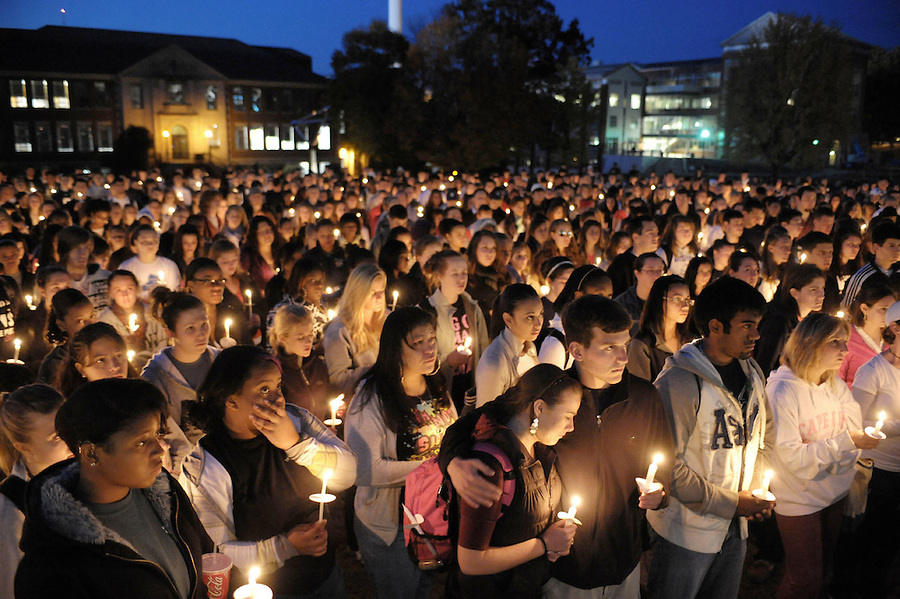
Students gathered for a candelight vigil in Storrs on October 21, 2009 to honor the memory of Jasper Howard
Despite the continued on-field success, 2009 saw tragedy strike Storrs and the program, as promising starting cornerback Jasper Howard was murdered, following an incident that resulted in his stabbing at a UConn sanctioned dance in the center of campus, after a win over Louisville.
The state mourned, the school remembered and the program honored. Edsall, who brought all members of the team to Miami to attend the funeral, gave a moving eulogy to the player he brought from the rough streets of Miami to remote Storrs.
The Huskies struggled as they returned to the field, losing three straight by a combined ten points to West Virginia, Rutgers and Cincinnati. On the horizon was the Huskies biggest game in program history and the team had a decision to make. They knew they were not honoring Jazz, their fallen teammate, the way he would have wanted, with the three consecutive losses. As they headed to South Bend to take on Notre Dame, the players vowed it would not happen again.
UConn fans traveled to support the program in their quest for the upset, taking over Notre Dame Stadium in both spirit and in decibel level. Even after the Huskies fell behind 14-0, UConn showed the perseverance that is the hallmark of the program, coming from nothing to accomplishing dreams. UConn overcame the deficit to win in double overtime, 33-30. However, the win on the scoreboard and in the legendary setting, was nothing in comparison to what the win meant in honoring number six, which could be heard in Edsall’s voice and the fans in the background:
The Huskies ran the table to close out ’09, including in their third straight bowl against the SEC and South Carolina. UConn won the game 20-7 in convincing fashion, as the game was never close, despite the score. The Huskies dominance prompted an apology from Gamecocks head coach Steve Spurrier to his fanbase, but there wasn’t anything he could have done, UConn was on a mission and nothing was going to get in their way.
That set up 2010, which was supposed to be the year UConn took an even further step and the schedule presented an opportunity, an opener on the road in the Big House against Michigan. The Huskies were picked by ESPN Gameday to win, but they fell flat, a combination of a huge turnover and the running ability of Denard Robinson. It was a rocky start to an even rockier season, that saw the dismissal of their starting quarterback, Cody Endres.
However, true to form, UConn again persevered and rattled off five consecutive wins, including their first ever victory over West Virginia, to capture their second Big East title, earning their first trip to a BCS game, the Fiesta Bowl on January 1, 2011 against Oklahoma. It was the culmination of everything the program had worked towards since 2002, UConn football had reached the pinnacle and they may have had a little help:
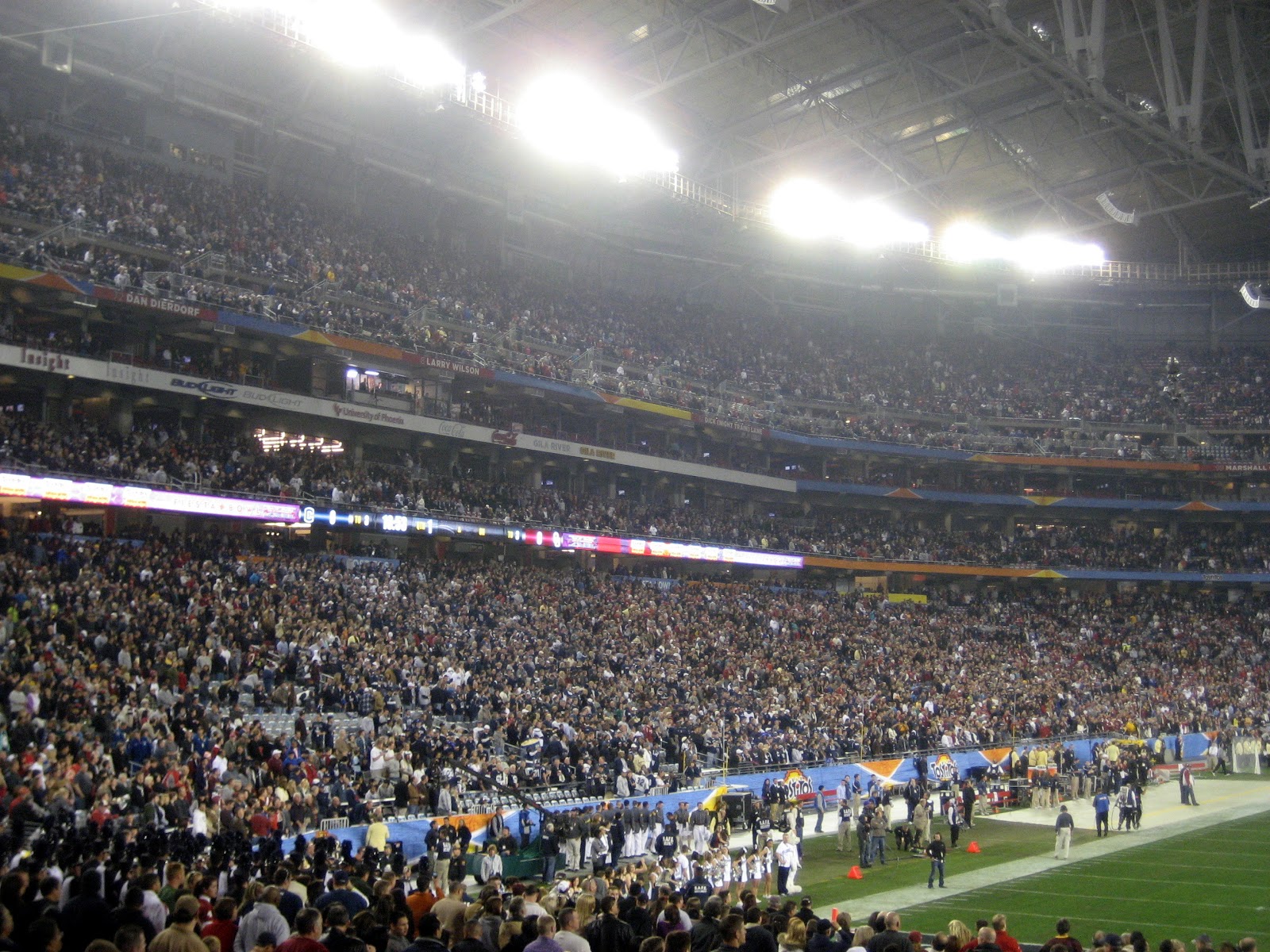 Fans again supported the program despite the reports that the school only sold 4,500 of the allotted 17,500 tickets. Instead of purchasing the inflated rates, fans took to the secondary market and arrived in Glendale in droves. The picture insert portrays just how many UConn fans were in attendance at University of Phoenix Stadium.
Fans again supported the program despite the reports that the school only sold 4,500 of the allotted 17,500 tickets. Instead of purchasing the inflated rates, fans took to the secondary market and arrived in Glendale in droves. The picture insert portrays just how many UConn fans were in attendance at University of Phoenix Stadium.
The game was an opportunity in prime time on New Year’s Day against a traditional power, but the Huskies fell short. Even with the loss to the Sooners, UConn football had nothing left to prove. However, change was about to hit, as head coach Randy Edsall accepted the same position at Maryland, leaving the program with a huge hole to fill.
Coaching Transition & Revival Under Bob Diaco (2011-Present)
Paul Pasqualoni was the choice to replace Randy Edsall and his success in development, could not outweigh the game day coaching. The Huskies suffered on the field, going 5-7 each of his two years in Storrs, missing a bowl game by one win each season. Mistakes were prevalent. A glaring error in attempting a late throw while running out the clock, leading to an interception from a walk-on quarterback, on the road against Vanderbilt, can be exhibit one, two and three of why things went poorly on game day. After two seasons and a combined 10-14 record, Pasqualoni was on the hot seat; and that right there says everything anyone needs to know about the expectations surrounding the UConn football program.
After just nine years in FBS football, after just seven seasons in a BCS conference, expectations from fans, alumni, the school and the state, were locked in. Wins and bowl games are the minimum goals and the fan base will not accept anything less. UConn is a championship university, whether it’s academics or athletics, which is why Pasqualoni was fighting for his job in year three.
The season did not start well; four losses in four games and immediately Coach P and George DeLeone were shown the exits. The Huskies struggled to fill the void of losing two full-time coaches, but when things got settled, UConn was pretty good, including a season ending 45-10 win over Memphis, where QB Casey Cochran broke the school record with 461 passing yards.
After the season, the search for a new head coach began in earnest. Interim head man TJ Weist was given an opportunity, but athletic director Warde Manuel wanted a fresh start, hiring defensive coordinator and former assistant coach of the year, Bob Diaco, away from Brian Kelly and Notre Dame.
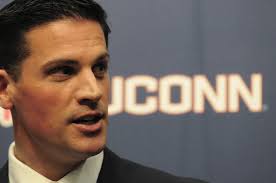 Diaco did not disappoint during his introductory press conference, showcasing his upbeat, positive attitude, speaking Latin and quoting St. Augustine, while also echoing words that were refreshing to everyone who heard, highlighting a plan of how the Huskies were going to become champions once again.
Diaco did not disappoint during his introductory press conference, showcasing his upbeat, positive attitude, speaking Latin and quoting St. Augustine, while also echoing words that were refreshing to everyone who heard, highlighting a plan of how the Huskies were going to become champions once again.
The first season can be summarized by the first offensive play from scrimmage, a fumble. UConn lost their starting quarterback in Cochran after just one game, as he was forced to retire due to a concussion. The Huskies went 2-10 in Diaco’s first year, the worst record for the program since joining the FBS ranks. However, Diaco stuck to the process he had laid out and the culmination of the progress made came in the final home game at The Rent in 2015, as UConn beat undefeated Houston, handing the Cougars the only loss they experienced all season, as the stands emptied onto the field.
The Huskies returned to bowl season a year ago and year three under Diaco promises to be an eventful one. UConn begins a new home-and-home series with both Virginia and their old conference mate Syracuse. Oh and there’s the highly anticipated renewal of the rivalry with Boston College hanging in late November.
Comparisons, The NFL & How the Huskies Stack Up to the Power 5
So the history of the program has been explored, now how do the Huskies stack up against other power five institutions in preparing their players to move on to the next level? Below is forty second slideshow, with the comparisons to each power five conference, broken down by each member school.
What you’ll find is the Huskies have more players in the NFL than 36 power five schools.”
UConn is in elite company when it comes to their two BCS conference championships. Dating back to 2004, the year the Huskies joined the Big East, only twenty-three schools have won multiple BCS conference championships.They are:
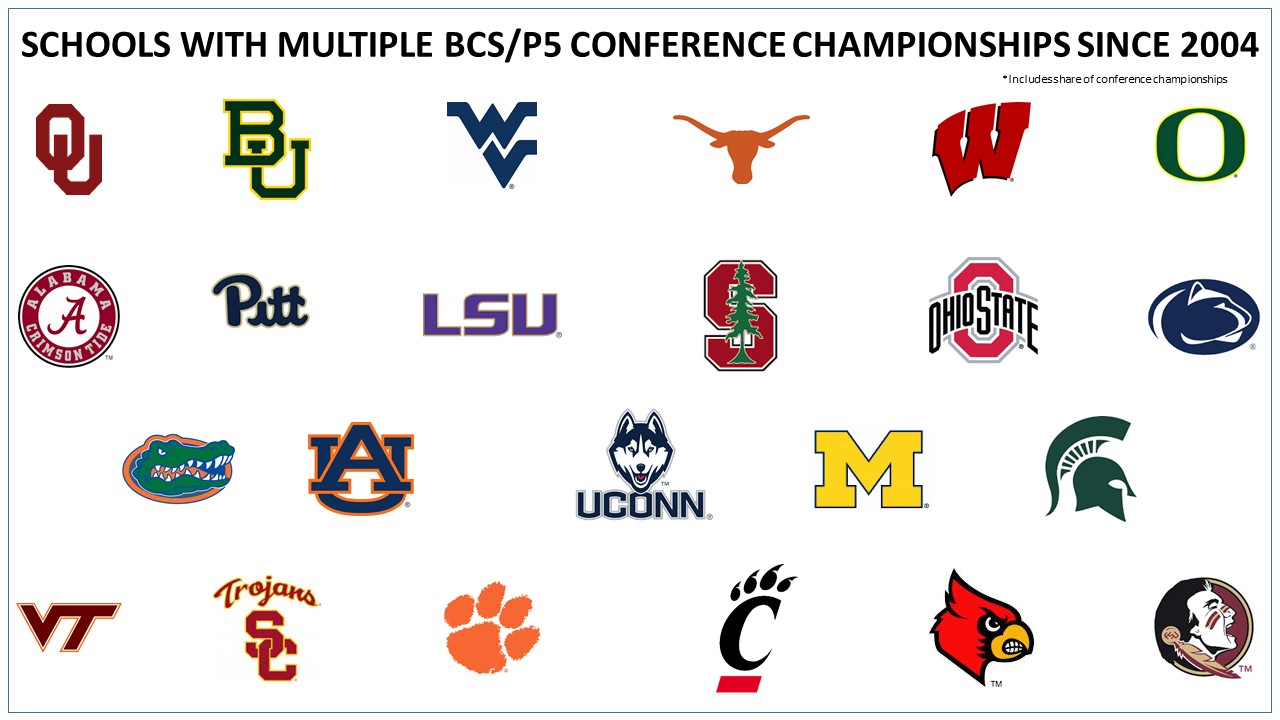
One bad coaching hire will not make an athletic program, especially one that has poured as much support behind it, as the University of Connecticut. Decisions by the Big 12 on their future should come at the end of May, early June time frame. It’s hard to see how UConn, given the market reach and overall success of the school, both athletically and academically, is not included, should expansion occur. One can use their own judgement when evaluating the UConn football program, but if looking objectively, it is very far from the hindrance that the narrative suggests.

Comments
2,477 Comments